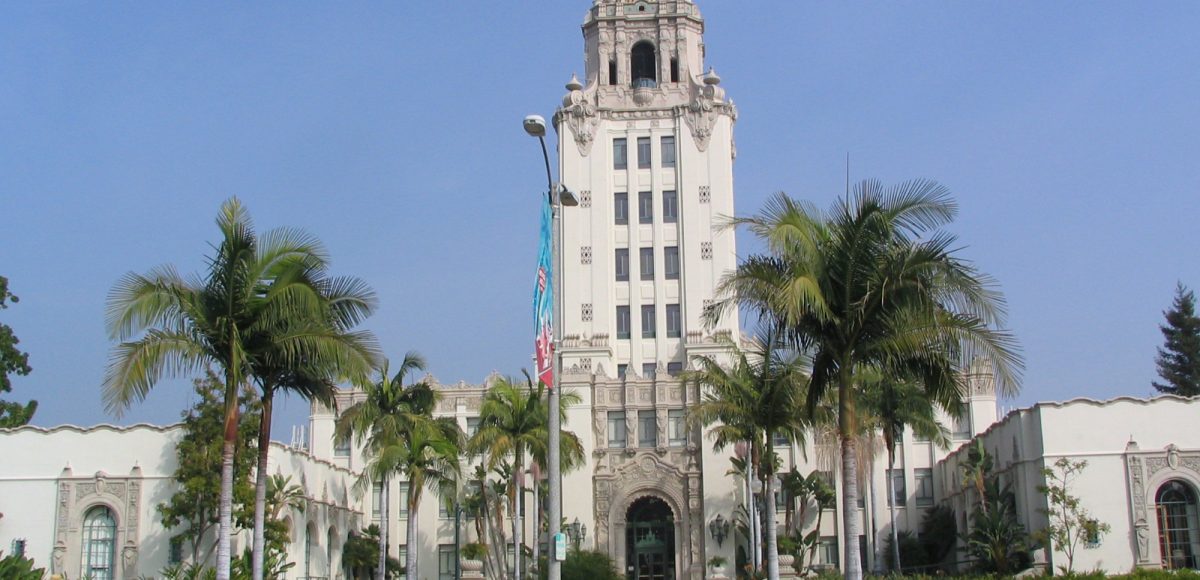Imagine exiting the subway portal at Wilshire and La Cienega, once it comes online in 2023, and immediately knowing that you are not just in Beverly Hills, but in a distinctive section of Beverly Hills. Such could be the future of the southeast portion of Beverly Hills in the coming years.
After years of conversations on just how to enliven the southeast part of the city, the community is poised to start to see a discernible change in the area by the time Metro starts transporting millions of riders through Beverly Hills. Such changes are expected to encourage new businesses to open, augment safety, and entice visitors to walk around an area that has long been considered to have yet to achieve its potential.
“Vibrant amenities would give people a reason to get off the Metro and walk around,” predicted Beverly Hills Conference and Visitors Bureau CEO Julie Wagner, underscoring how adding beauty on the street would greatly serve to enhance the city’s brand.
Wagner was among the two dozen attendees at Monday’s meeting of the Strategic Planning Committee / Southeast Task Force, the fifth such monthly meeting since Mayor John Mirisch combined the two entities. Those in attendance to discuss the future of just how the area might take shape in the coming years included residents, business owners and other interested parties, as well as city staff, the mayor and Councilman Julian Gold.
In concert with the evolution of La Cienega Park an active process in which the community is invited to participate at a Town Hall on Sept. 25 the community is likewise being tasked to influence just how the city’s southeast area can be improved.
The hour-long strategic meetings, which are held on the second Monday of the month, are each designed to highlight specific areas of concern. Past meetings have focused on parking and mobility, residential issues and commercial issues. This week’s meeting focused on pedestrian amenities, with urban design slated to be discussed at next month’s meeting.
Staff will subsequently be taking the recommendations from the meetings to City Council in order that the five elected officials can determine what needs to be done, such as hiring a consultant to spearhead the process.
Founded in 2011, the Southeast Task Force lost much of its momentum over the years until Mirisch reinvigorated it earlier this year to help continue the work of the Strategic Planning Committee started last year under Gold’s mayorship. Conveniently, Gold’s committee was just poised to start delving into what could be done in the southeast area of the city when Mirisch was sworn in.
A 2012 city staff report codified a multitude of recommendations brought by the members of the Task Force after nine months of meetings. Primary themes that developed included parking constraints, the need for business attraction and retention efforts, the need for programming of events and activities to enliven the area, and the need to enhance mobility. In the intervening years since that report was presented to City Council, those recommendations continue to resonate. Building on previous studies and meetings, this week’s strategic planning meeting for the southeast area brought forth a variety of new ideas and ones that have yet to be implemented. Such ideas included creating a mobility hub; adding diagonal parking on Robertson; establishing decorative crosswalks or ones that look 3D; adding better lighting; transforming the landscape to include trees that don’t uproot the sidewalks or ones that add shade; and adding branded pedestrian elements including benches and tables for people to linger.
Gold was particularly keen on creating measures that would enhance pedestrian safety, such as installing 3D crosswalks.
“I think those are forwardthinking and different and we should investigate,” he said. “If it looks like you are coming up on a solid impediment, it will in fact slow you down.”
Over the past few years, Robertson has gotten a bit of added luster, partly from the introduction of the city’s BOLD initiatives, such as the addition of dynamic and bright holiday lighting throughout the street. Additionally, there was significant support to add more light to the area to enhance safety, with Mirisch advocating the exploration of photoluminescent lighting.
“It almost creates a magical feeling at night and doesn’t require a lot energy. And that’s worth looking at,” he said.
Next month’s meeting is slated for Oct. 14 at City Hall at 5 p.m. and everyone is invited to attend and contribute to the discussion.







